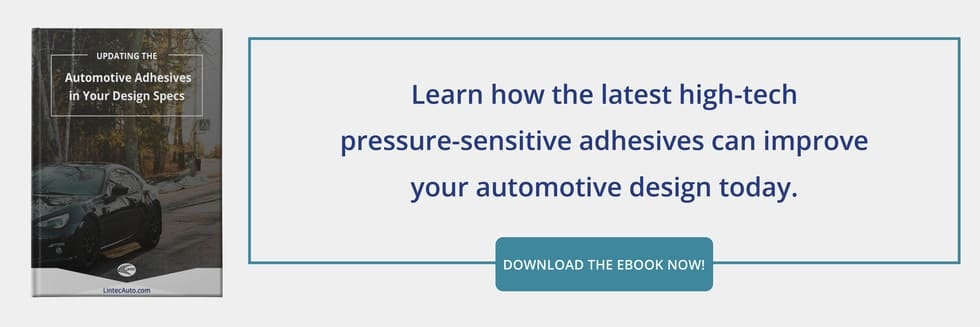A designer’s worst dashboard nightmare would be for trim, emblems, or other detail elements to pop free when touched, right into the driver’s hands. There could be few worse indictments of vehicle cabin craftsmanship.
It’s for this reason that many traditional dash elements have been clipped or riveted into place. But mechanical bonds present another set of well-documented issues: buzzing, rattling, a poorer seal against sound and heat from the engine, a bond dependent on few finite contact points, cracks/gaps that collect debris and allow for moisture penetration…
Advanced, modern dashboard tapes present none of these annoyances. At the same time, they create solid, consistent bonds that outperform traditional fastening methods in every way—longevity, vibration, seal, bond strength, and everything else. But which pressure-sensitive automotive mounting tape is best for each element of your design project?
Check these boxes while analyzing your options:
Die-Cuttable to Spec
Dashboard mounting tapes will operate in a highly visible, aesthetically-focused area of the vehicle interior. It’s more important than virtually anywhere else that they fit perfectly to the shape of the parts they’ll be affixing and create a seamless bond. Don’t rely on strips, rolls, and hand cutting. Have them professionally precision die-cut by the supplier in advance.
Tight Seal
Tapes need to erase bond areas, not highlight them. Smooth, well-aligned substrates should use thin-gauge film core tapes that will form rock-solid bonds and be completely invisible to passengers.
If the bonded substrates are rough, textured, or otherwise imperfectly aligned, a low-profile foam mounting tape is ideal. The foam can compress and expand to fill tiny gaps—for a strong, consistent bond—while remaining thin enough to keep the decorative element from looking lifted away from the surface.
HSE or LSE Optimized
The adhesive layers of the tape are arguably even more critical than the core and must cater to the substrates they’ll be used to bond. Dashboards often consist primarily of low-surface energy injection-molded thermoplastic. It takes an aggressive, tacky LSE adhesive to wet out fully on LSE plastic surfaces and form a permanent strength bond. HSE surfaces can’t use the same style of wet adhesive, or it will flow out beyond the bond area.
Vibration Damping
There are two ways to cope with buzzing and tremors due to a running engine and contact with the road. A thin, high-strength, film-core dashboard tape can rigidify the dash—as if all components were one solid piece. This prevents vibrations from rattling parts against each other at separate frequencies and causing noise. Instead, vibrations carry evenly throughout the whole dashboard.
The other option is a foam dashboard tape that absorbs vibrations, cushioning parts against buzzing contact and harmlessly diffusing the energy. Long, thin trim and molding elements benefit most from a rigid bond, whereas knobs and small, 3D elements with uneven shapes may be better suited to foam.
Heat Resistant
Vehicle cabins are exposed to incredible heat when closed up in sunny weather. Adhesive layers should be rated to remain stable at temperatures well over 157 degrees Fahrenheit (the average dashboard temperature in a car parked in the hot sun for an hour on a 95-degree summer day).
Other requirements can factor in as well—shearing strength in areas where you expect frequent impacts or friction, for example—but these are the primary qualities of the best double-sided dashboard tape for mounting trim, emblems, molding, and the like.
Labels are a unique case, though, since the tape ribbon is visible and only needs one adhesive layer. Out-gassing from LSE plastics can gradually form unsightly bubbles or blisters in a dashboard label, which the right dashboard tape will have to mitigate (perhaps with a porous backing). Such tape will also have to survive UV exposure without curling or suffering discoloration.
Consult with a dashboard tape supplier to learn more about the options that will check all the boxes for your design project.

